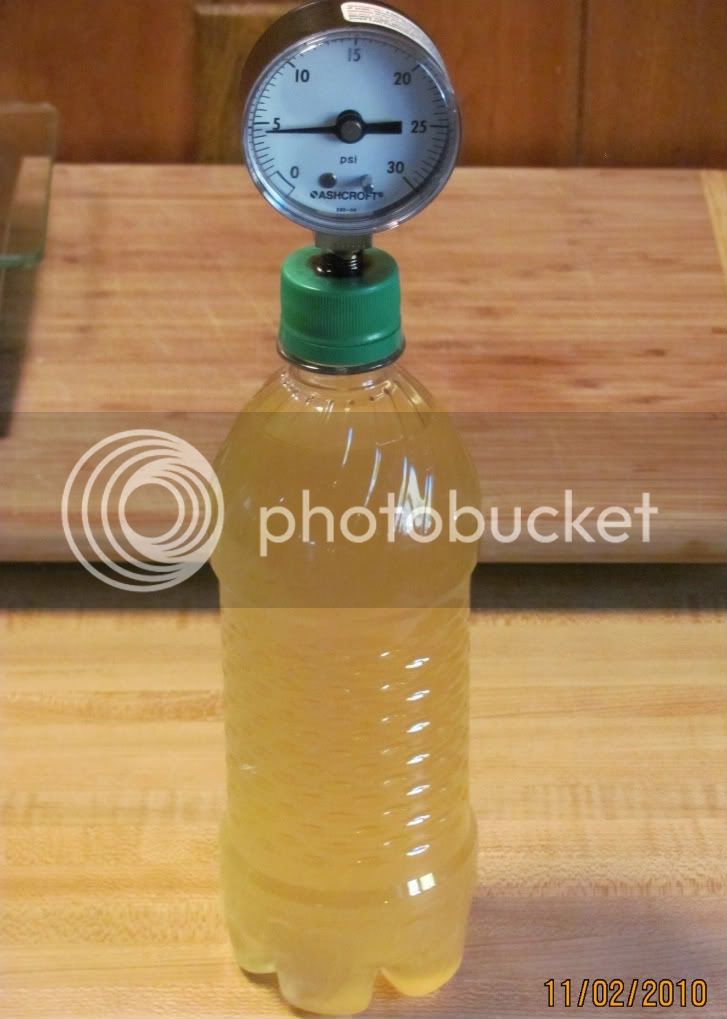I had a question regarding Volumes of CO2 in a carbonated cider. I found a Priming Sugar Calculator. It asks you to enter the Volumes of CO2 you want in the beverage. It then asks you the volume of the liquid in gallons and also the temperature. It then calculates the amount of sugar you need to get the requested number of volumes of CO2.
My question is, what is it refering to when it is asking for the number of volumes of CO2. Is it the number of volumes of the dead space above the liquid or is it the volume of the bottle?
I'd like to take a Grolsh type bottle and put a stopper with a pressure gauge on it. Using Boyles Law, I should be able to calculate the pressure in PSI that I would like to see to provide a number of volumes of CO2. This way I could just view the gauge instead of having to open one every few days or weeks to test.
I think it would be allot safer as you may get a faster or slower ferment than you expect and have a over pressurized bottle or a under pressurized bottle.
I think this could work. Any opinions?
My question is, what is it refering to when it is asking for the number of volumes of CO2. Is it the number of volumes of the dead space above the liquid or is it the volume of the bottle?
I'd like to take a Grolsh type bottle and put a stopper with a pressure gauge on it. Using Boyles Law, I should be able to calculate the pressure in PSI that I would like to see to provide a number of volumes of CO2. This way I could just view the gauge instead of having to open one every few days or weeks to test.
I think it would be allot safer as you may get a faster or slower ferment than you expect and have a over pressurized bottle or a under pressurized bottle.
I think this could work. Any opinions?


